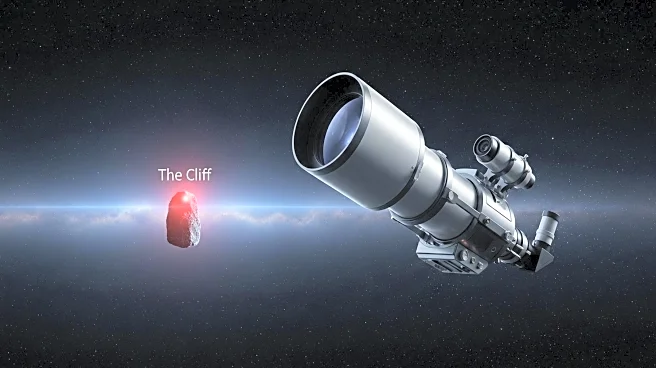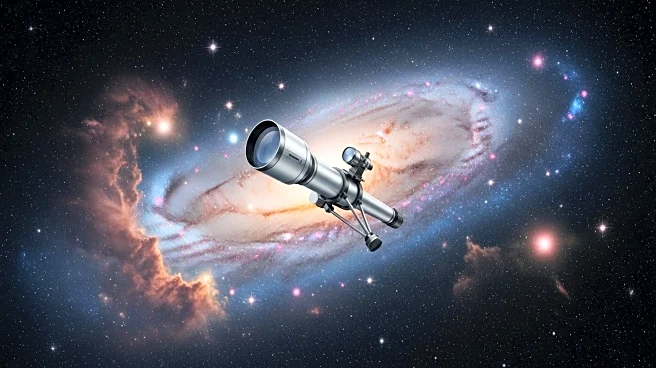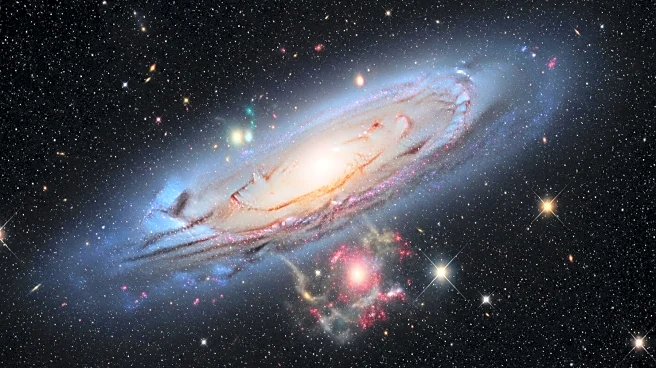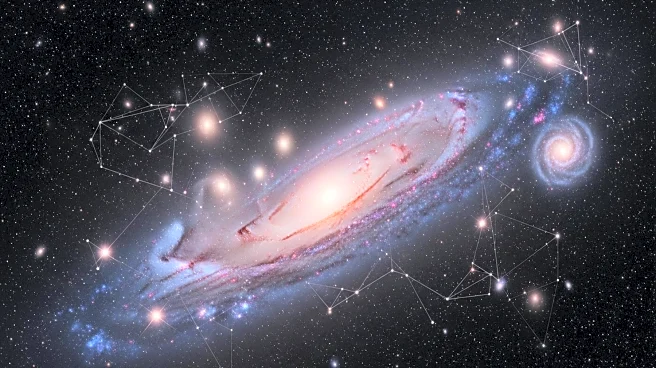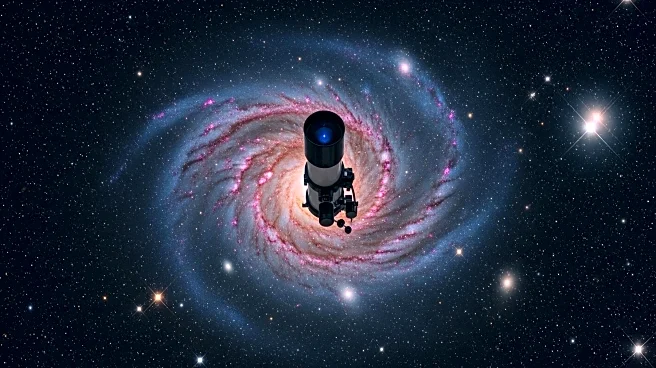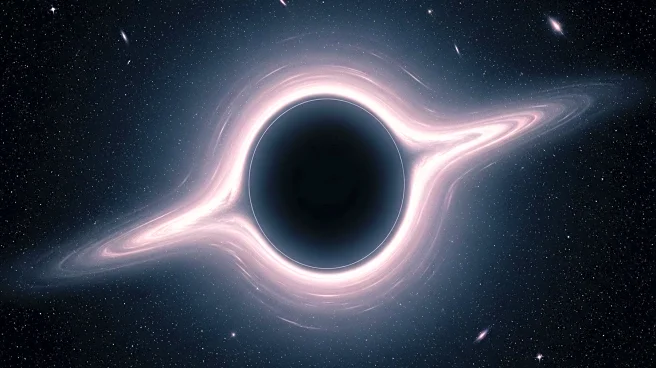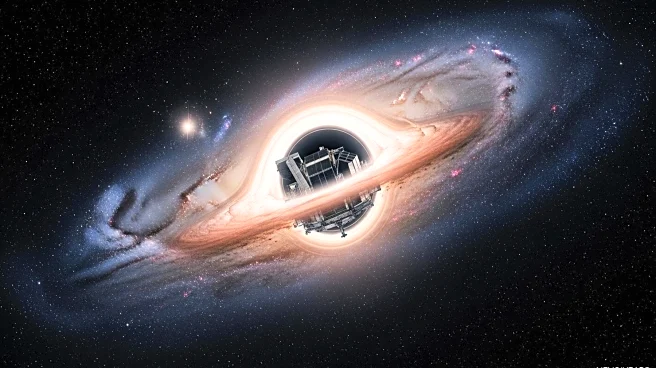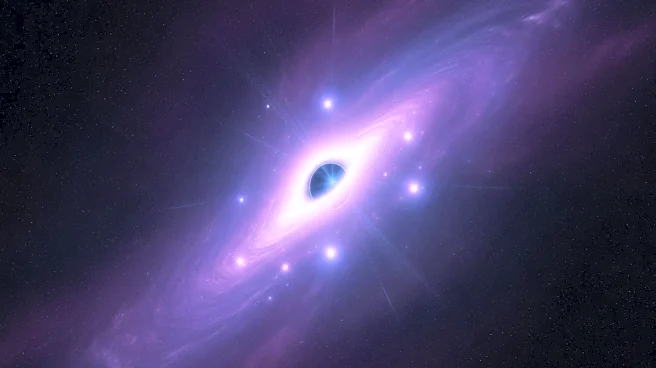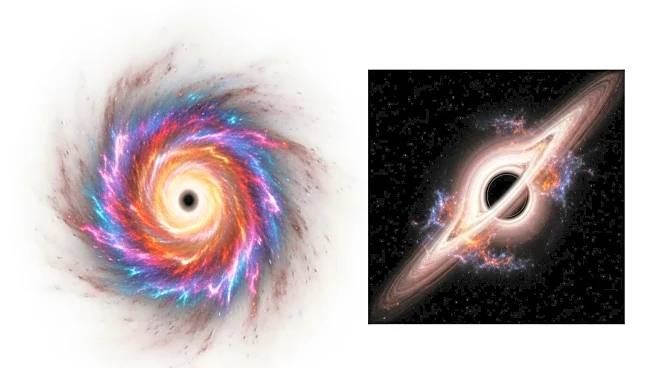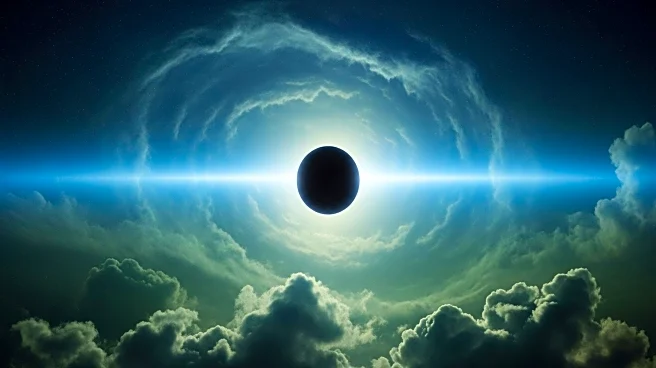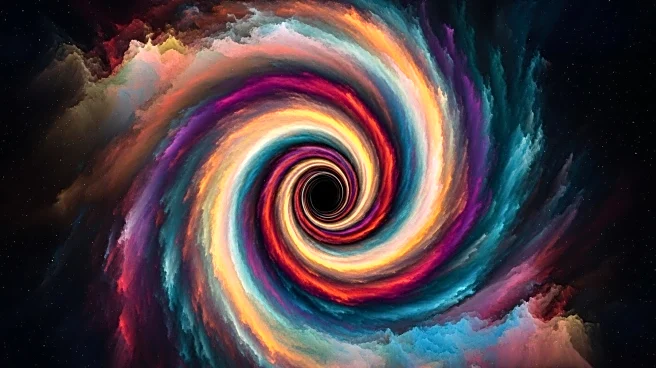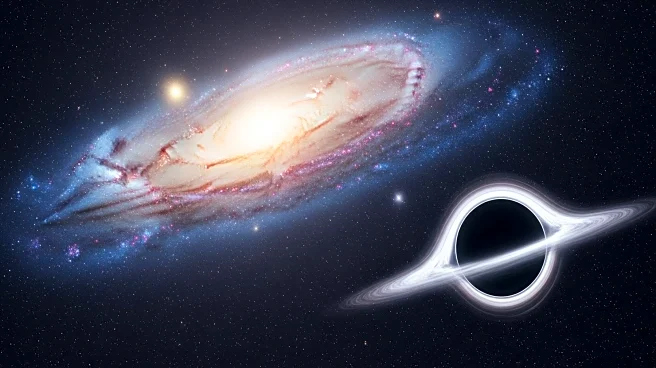What is the story about?
What's Happening?
The James Webb Space Telescope (JWST) has discovered a new class of supermassive black holes, potentially solving the mystery of small red dots observed in its images. These objects, known as 'The Cliff,' are embedded in thick gas shells and emit light predominantly in the mid-infrared range. The discovery challenges previous interpretations of these red dots as young galaxies, suggesting instead that they are active galactic nuclei surrounded by dense gas. This finding provides new insights into the nature of these mysterious objects and their role in the universe.
Why It's Important?
The discovery of 'The Cliff' objects by the JWST is significant for understanding the early universe and the formation of supermassive black holes. These objects offer a new perspective on the evolution of galaxies and the role of active galactic nuclei in shaping cosmic structures. By studying these objects, astronomers can gain insights into the processes that drive the growth of black holes and their impact on surrounding environments. This research also highlights the capabilities of the JWST in uncovering previously unseen cosmic phenomena.
What's Next?
Further observations and studies will focus on characterizing 'The Cliff' objects and understanding their formation and evolution. Researchers will use advanced models and simulations to explore the physical properties of these objects and their interactions with surrounding gas. These efforts will contribute to a deeper understanding of the universe's early history and the mechanisms driving the growth of supermassive black holes. The findings may also inform future observations and missions aimed at exploring similar cosmic phenomena.
AI Generated Content
Do you find this article useful?
